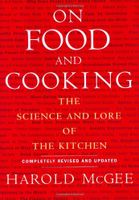Save 25% on ckbk Premium Membership with code FALLFLAVORS 🍁
Mollusc Texture
By Harold McGee
Published 2004
The adductor muscles largely determine the texture of several bivalves—especially the scallop, whose large and tender “swimming” muscle is often the only portion served. The other bivalve bodies are eaten whole, and include one or two adductors together with miscellaneous innards; small tubes and thin sheets of muscle and connective tissue; soft masses of eggs, sperm, and food particles; and a general proteinaceous mucus that lubricates and binds food particles. Clams, mussels, and oysters are thus slick and both crunchy and tender when raw, chewy when cooked. The greater the proportion of muscle tissue, the chewier the mollusc.
Become a Premium Member to access this page
Unlimited, ad-free access to hundreds of the world’s best cookbooks
Over 160,000 recipes with thousands more added every month
Recommended by leading chefs and food writers
Powerful search filters to match your tastes
Create collections and add reviews or private notes to any recipe
Swipe to browse each cookbook from cover-to-cover
Manage your subscription via the My Membership page
Part of
Advertisement
Related Recipes
-
-
-
-
Related Reference
-
-
-
-
Advertisement



